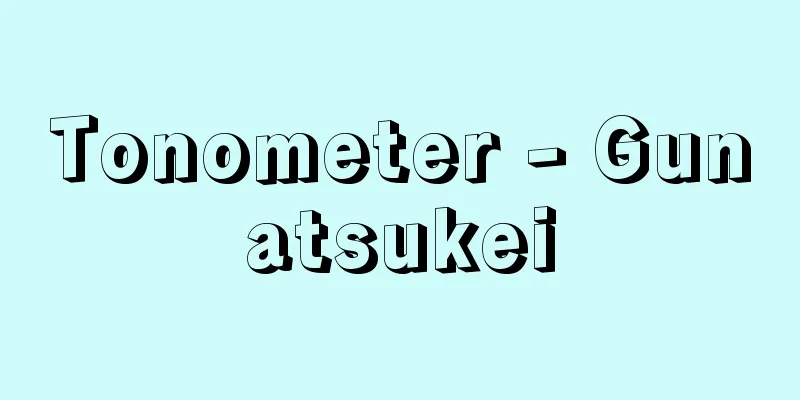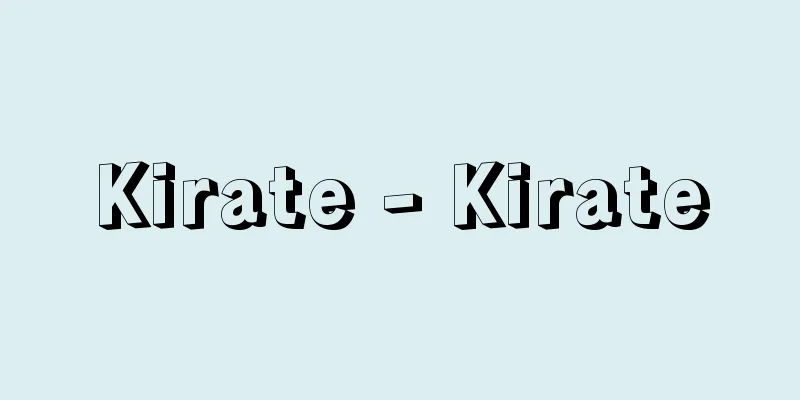Open cut mining - Rotenbori (English spelling)

|
A method of mining underground resources such as ores and coal on the surface of the earth, suitable when the deposits are exposed on the surface or at shallow depths. Even if the loading and transportation work incidental to mining is done underground, it is called open-cut mining when the main work of mining is done in the open. It is also called on-land mining, open-cut mining, surface mining, etc., as opposed to underground mining. There are several methods of open-cut mining: (1) Slope Mining This is a method of mining along the slope of a mountainside, known as slope mining. It is easy to mine on either a steep or gentle slope without requiring advanced technology, but there is a constant risk of falling rocks and crashing, so it is not often used except in the early stages of development or for small-scale mining. (2) Glory Hole Method This is a mining method in which a mining face called a glory-hole is installed on the surface, followed by a vertical shaft and underground facilities, and the mining is carried out in a funnel shape around the vertical shaft. The underground facilities consist of a crushing room, a storage tank, loading and transporting equipment, etc., and are used to crush the ore that falls from the face through the vertical shaft into appropriate sizes and load it. This method also has drawbacks such as the danger inherent to the slope and the tendency for the shaft to become clogged during rainfall, so it gradually fell out of use. (3) Step mining This is a method of extracting the mining object in a step-like manner, with the horizontal part of the step being called the bench bed and the vertical part being called the face, and collectively these are called the bench. This mining method is also called the bench cut method. It has been used overseas for some time, but it has been widely adopted in Japan due to its advantages of being safe, efficient, and suitable for mass production, as well as the development of large machinery. For example, more than 98% of the nearly 200 million tons of limestone produced annually is extracted using this method. (4) Hydraulic mining: This is a method of mining by injecting high-pressure water, and is suitable for mining alluvial deposits such as placer ore. (5) Dredging: A method of mining sand ore that exists in riverbeds or flat land using a dredger. The maximum operating depth is about 30 meters. When open-cut mining is carried out on land, the topsoil or unused rock layer covering the deposit must generally be removed. This is called stripping, and the lower the stripping ratio (ratio of waste rock to ore), the more economical the open-cut mining is. Open-cut mining is much safer, more productive, and more economical than underground mining, but mining can cause pollution problems such as dust, water quality, and noise. In order to protect the environment and prevent danger, construction work such as backfilling with topsoil, planting trees, and forming lakes and ponds is required after the mine is completed. This is called reclamation, and it has become particularly important recently. In Japan, due to the geological nature of the deposits, large-scale open-cut mining is limited to limestone, dolomite, silica, crushed stone, and stone, but overseas there are many examples of large-scale open-cut mining of copper, iron, coal, lignite, and other ores. [Nobuo Fusamura] Source: Shogakukan Encyclopedia Nipponica About Encyclopedia Nipponica Information | Legend |
|
地表で鉱石、石炭などの地下資源を採鉱する方法で、鉱床が地表に露出または浅部にある場合に適する。採鉱に付帯する積込みや運搬作業が坑内で行われても、主作業である採掘が露天で行われる場合は露天掘りという。陸(おか)掘り、露天採掘、坑外採掘などともいい、坑内掘り、坑内採掘に対する。 露天掘りには次のような方法がある。 (1)傾斜面採鉱法 山腹の傾斜面に沿って採掘する方法で傾斜掘りと称され、地形が急傾斜でも緩傾斜でも高度の技術を要せずに採掘しやすいが、絶えず落石や墜落の危険があり、開発当初や小規模採掘の場合以外はあまり用いられない。 (2)グローリホール法 地表にグローリホールglory-holeとよぶ切羽(きりは)と、これに続く立坑(たてこう)と地下施設を備え、立坑を中心としてその周囲を漏斗(ろうと)状に採掘する方法で、地下施設は小割(こわり)室、貯鉱槽、積込み運搬設備などからなり、切羽から立坑を経て落下してくる鉱石を適当な大きさに粉砕して積み出す施設である。この方法も、傾斜面特有の危険性と、降雨時などに立坑詰まりをおこしやすいなどの欠点があり、しだいに行われなくなった。 (3)階段採鉱法 採掘対象物を階段状に採掘する方法で、階段の水平部をベンチ床(ゆか)、垂直部を切羽面、これらを総合してベンチといい、この採掘法をベンチカット法ともいう。海外では以前から行われていたが、安全で能率がよく大量生産に適するなどの長所と大型機械の発達により日本でも広く採用されている。たとえば年産2億トン近い石灰石生産の98%以上がこの方法で採掘されている。 (4)水力採鉱法 高圧水の噴射によって採掘する方法で、砂鉱などの堆積(たいせき)鉱床の採鉱に適している。 (5)浚渫(しゅんせつ)法 河川底または平坦(へいたん)な土地に存在する砂鉱を浚渫船(ドレッジャーという)で採鉱する方法。稼行できる深さは30メートルくらいまでである。 陸上で露天掘りを行う場合は一般に鉱床を覆う表土または不用の岩石層を除去しなければならない。これを剥土(はくど)といい、廃石と鉱石の比である剥土比が低いほど露天掘りの経済性がよくなる。露天掘りは坑内掘りに比して安全性、生産性、経済性などがはるかに優れているが、採掘に伴い粉塵(ふんじん)、水質、騒音などの公害問題をおこすおそれがある。その採掘跡は、環境保全と危険防止のため表土の埋め戻し、植樹による緑化、湖沼の形成などの工事が必要である。これをリクラメーションreclamationといい、最近とくに重要視されるようになった。日本では地質鉱床の関係で大規模に露天掘りができるのは石灰石、ドロマイト、珪石(けいせき)、砕石原料、石材などに限られているが、海外では銅、鉄、石炭、褐炭その他の鉱石が大規模に露天掘りで採掘されている例が少なくない。 [房村信雄] 出典 小学館 日本大百科全書(ニッポニカ)日本大百科全書(ニッポニカ)について 情報 | 凡例 |
<<: Lot - Roto (English spelling) lô Hebrew
>>: Rothenburg (English spelling)
Recommend
stalemate
…(2) Draw In any of the following cases, the game...
Oceanic front
A discontinuity between different water masses. Th...
Prince Arima
Year of death: 11/11/658 (11/12/658) Year of birth...
hot-air-balloon
…They are also called balloons because they are l...
Jesuit Japan News - Jesuit Japan News
This is the title given to the Japanese translatio...
little grebe (English spelling) littlegrebe
...Five species are found in Japan, three of whic...
Gödel - Kurt Gödel
American mathematician. Born in Brun (now Brno, C...
Prince Sanehito
Year of death: July 24, 1586 (September 7, 1586) Y...
Financial Democracy
The idea that when the state carries out financial...
American Mink - Amerikanmink
...It has white spots from the throat to the chin...
Kanrin Taisho - Kanrin Taisho
…The palace's official residence, the Hanlin ...
Bobsleigh - Bobsleigh (English spelling)
A steel sled with a handle at the front and a bra...
Sekigane [town] - Sekigane
A former town in Tohaku County in central Tottori ...
Life history
The process from birth to death of an individual ...
God of the fields - Tanokami
A general term for gods who help rice grow and br...









